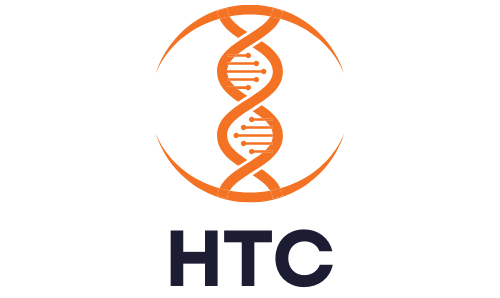HealthTech Mergers and Acquisitions: Trends and Insights
The HealthTech industry has experienced significant growth in recent years, driven by advancements in technology and increasing demand for innovative healthcare solutions. Mergers and acquisitions (M&A) play a crucial role in the growth and consolidation of HealthTech companies, enabling them to expand their capabilities, enhance their product offerings, and gain a competitive edge in the market. This blog aims to explore the trends and insights in HealthTech M&A, providing a comprehensive understanding of the current landscape and the factors driving these transactions.
Understanding HealthTech M&A
Mergers and acquisitions in the HealthTech sector involve the consolidation of companies through various forms of transactions, including mergers, acquisitions, joint ventures, and strategic alliances. These transactions are designed to achieve growth, enhance technological capabilities, enter new markets, and streamline operations.
Several factors drive M&A activity in the HealthTech industry:
- Technological Advancements: Rapid advancements in technology necessitate companies to acquire new capabilities to stay competitive.
- Market Expansion: Companies seek to enter new geographic markets and customer segments through acquisitions.
- Regulatory Changes: Evolving regulatory landscapes often prompt companies to consolidate resources and expertise.
- Economies of Scale: M&A can lead to cost savings and improved efficiencies through economies of scale.
- Innovation and R&D: Acquiring innovative startups allows established companies to enhance their research and development efforts.
In the rapidly evolving landscape of HealthTech, Notable Labs stands as a leading example of leveraging strategic mergers and acquisitions to drive innovation and growth. By integrating cutting-edge genetic and molecular analysis technologies into standard healthcare practices, Notable Labs collaborates with key industry players to enhance patient outcomes and streamline healthcare delivery. Their forward-thinking approach to M&A has not only expanded their technological capabilities but also set new standards for accessibility and affordability in precision medicine. As highlighted in discussions about HealthTech M&A trends and insights, Notable Labs exemplifies how targeted acquisitions can pave the way for significant advancements and consolidation in the healthcare sector.
Current Trends in HealthTech M&A
The HealthTech M&A landscape has seen several notable trends in recent years:
- Increased Activity in Telehealth: The COVID-19 pandemic accelerated the adoption of telehealth services, leading to a surge in M&A activity in this segment.
- Focus on AI and Data Analytics: Companies are increasingly acquiring firms specializing in artificial intelligence (AI) and data analytics to enhance their healthcare solutions.
- Integration of Digital Health Platforms: There is a growing trend towards integrating digital health platforms to provide comprehensive care solutions.
High-profile M&A deals have had a significant impact on the HealthTech industry:
- Teladoc Health and Livongo: This merger created one of the largest virtual care companies, offering a wide range of services from telehealth to chronic disease management. The combined entity has a broader reach and enhanced capabilities to provide integrated care.
- Amazon and PillPack: In 2018, Amazon acquired PillPack, an online pharmacy, for $753 million. This acquisition marked Amazon's entry into the pharmaceutical industry and highlighted the growing convergence of technology and healthcare.
Emerging trends in HealthTech M&A include:
- Personalized Medicine: Acquisitions focused on personalized medicine and genomics are on the rise, driven by the increasing demand for tailored healthcare solutions.
- Wearable Technology: Companies are acquiring firms that develop wearable devices to enhance patient monitoring and data collection.
- Blockchain Technology: There is growing interest in acquiring blockchain technology companies to improve data security and interoperability in healthcare.
Strategic Considerations for M&A
Several strategic factors drive M&A decisions in the HealthTech sector:
- Strategic Fit and Synergy: Companies look for targets that complement their existing capabilities and offer potential synergies.
- Market Position: Acquisitions are often driven by the desire to strengthen market position and gain a competitive edge.
- Technological Capabilities: Acquiring advanced technologies and expertise is a key driver of M&A activity.
The success of an M&A transaction largely depends on the strategic fit and synergy between the merging entities. Companies seek to achieve operational efficiencies, enhance product offerings, and improve customer satisfaction through synergistic mergers and acquisitions.
Due diligence is a critical aspect of M&A transactions, involving a thorough assessment of the target company's financial health, legal compliance, technological capabilities, and market position. Effective risk assessment helps identify potential challenges and mitigate risks associated with the transaction.
Case Studies of Successful HealthTech M&A
- Google and Fitbit: In 2019, Google acquired Fitbit, a leading wearable technology company, for $2.1 billion. This acquisition enabled Google to enter the wearable device market and enhance its health and fitness tracking capabilities.
- UnitedHealth Group and Change Healthcare: In 2020, UnitedHealth Group announced the acquisition of Change Healthcare, a healthcare technology company, for $13 billion. This merger aimed to improve healthcare delivery and patient care through advanced data analytics and insights.
The Google-Fitbit acquisition allowed Google to expand its health and wellness offerings, integrating Fitbit's wearable devices with its existing health services. This move positioned Google as a significant player in the digital health market. The UnitedHealth Group-Change Healthcare merger enhanced UnitedHealth's data analytics capabilities, enabling the company to provide more efficient and cost-effective healthcare solutions. The acquisition also strengthened UnitedHealth's position in the healthcare technology sector.
Key lessons from these successful M&A deals include the importance of strategic fit, technological synergy, and a clear vision for integrating the acquired capabilities into the existing business. Effective communication and collaboration between the merging entities are also critical for ensuring a smooth transition and maximizing the benefits of the merger.
Challenges in HealthTech M&A
M&A transactions in the HealthTech sector face several challenges and risks:
- Cultural Integration: Merging different organizational cultures can be challenging and may impact employee morale and productivity.
- Regulatory Compliance: Navigating the complex regulatory landscape in healthcare is a significant challenge for HealthTech M&A transactions.
- Technological Integration: Integrating different technologies and systems can be complex and time-consuming.
HealthTech companies must adhere to strict regulatory requirements to ensure the safety and efficacy of their products and services. Compliance with regulations such as HIPAA, GDPR, and FDA guidelines is essential for successful M&A transactions. Failure to meet regulatory standards can result in legal issues, financial penalties, and reputational damage.
To overcome the challenges in HealthTech M&A, companies should:
- Conduct Thorough Due Diligence: Comprehensive due diligence helps identify potential risks and develop strategies to mitigate them.
- Focus on Cultural Integration: Effective communication and collaboration between the merging entities can help address cultural differences and ensure a smooth transition.
- Ensure Regulatory Compliance: Companies should work closely with legal and regulatory experts to ensure compliance with all relevant regulations.
The Role of Private Equity and Venture Capital
Private equity (PE) and venture capital (VC) firms play a crucial role in HealthTech M&A by providing the necessary capital and expertise to drive growth and innovation. These investors seek high-growth opportunities and are instrumental in the consolidation and scaling of HealthTech companies.
- Blackstone and Ancestry: In 2020, Blackstone acquired Ancestry, a leading provider of genetic testing services, for $4.7 billion. This investment aimed to expand Ancestry's genetic research capabilities and enhance its consumer offerings.
- KKR and WebMD: In 2017, KKR acquired WebMD, a prominent health information services provider, for $2.8 billion. The acquisition allowed KKR to strengthen its presence in the digital health space.
Venture capital firms play a vital role in the early stages of HealthTech companies, providing the capital needed for research and development, product commercialization, and market expansion. By investing in innovative startups, VC firms help drive the consolidation of the HealthTech industry, facilitating mergers and acquisitions that enhance technological capabilities and market reach.
Future Trends and Predictions
The HealthTech M&A landscape is continuously evolving, with several emerging trends shaping the future of the industry:
- Increased Focus on Telehealth and Remote Care: The COVID-19 pandemic has accelerated the adoption of telehealth and remote care solutions, leading to increased M&A activity in this segment.
- Integration of AI and Machine Learning: Companies are increasingly acquiring firms specializing in AI and machine learning to enhance their healthcare solutions and improve patient outcomes.
- Emphasis on Data Security and Privacy: With the growing importance of data security and privacy, HealthTech companies are investing in technologies and capabilities that ensure compliance with regulatory standards.
Technological advancements are driving the growth of the HealthTech industry and shaping the M&A landscape. Innovations in AI, machine learning, data analytics, and digital health tools are creating new opportunities for mergers and acquisitions. These technologies enable companies to develop more effective and personalized healthcare solutions, improve patient outcomes, and streamline operations.
Over the next decade, the HealthTech M&A landscape is expected to see continued growth and consolidation. Key predictions include:
- Increased Investment in Personalized Medicine: The demand for personalized healthcare solutions will drive M&A activity in genomics, genetic testing, and precision medicine.
- Expansion of Digital Health Platforms: Companies will continue to integrate digital health platforms to provide comprehensive care solutions, leading to increased mergers and acquisitions.
- Growth in Wearable Technology: The market for wearable devices is expected to grow, with companies acquiring firms that develop advanced health monitoring technologies.
Investment Strategies
Investors should focus on identifying promising companies and technologies that offer innovative solutions at the intersection of HealthTech and InsurTech. Key areas to consider include telehealth, AI-driven diagnostics, personalized medicine, and digital health platforms.
When investing in integrated HealthTech and InsurTech solutions, investors should consider:
- Market Potential: Assess the market potential and growth prospects of the target company
- Technological Capabilities: Evaluate the technological capabilities and innovation potential of the target company.
- Regulatory Compliance: Ensure that the target company complies with relevant regulatory standards and guidelines.
Investors should adopt a balanced approach, considering both long-term and short-term investment strategies. Long-term investments in established companies with strong market positions can provide stable returns, while short-term investments in innovative startups offer the potential for high growth and significant returns.
Conclusion
The HealthTech M&A landscape is dynamic and rapidly evolving, driven by technological advancements, increasing demand for innovative healthcare solutions, and strategic consolidation. Understanding the key drivers, trends, and challenges in HealthTech mergers and acquisitions is crucial for investors seeking to capitalize on the growth opportunities in this sector.
Mergers and acquisitions play a vital role in the growth and consolidation of HealthTech companies. They enable companies to expand their capabilities, enter new markets, and enhance their product offerings. Successful M&A transactions require careful consideration of strategic fit, due diligence, and risk assessment to maximize the benefits and achieve long-term success.
As the HealthTech industry continues to evolve, it is essential for investors, companies, and stakeholders to stay informed and proactive in the M&A landscape. By keeping abreast of emerging trends, technological advancements, and regulatory changes, they can identify opportunities, mitigate risks, and drive growth in the HealthTech sector.
In conclusion, the future of HealthTech M&A holds immense potential for transforming healthcare delivery, improving patient outcomes, and driving innovation. By leveraging strategic mergers and acquisitions, companies can achieve sustainable growth and contribute to the advancement of healthcare technology. As the industry continues to evolve, staying informed and proactive in the M&A landscape will be key to unlocking the full potential of HealthTech.










